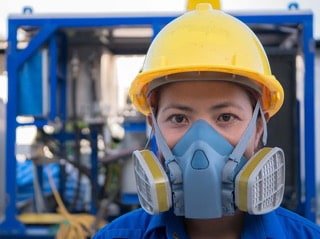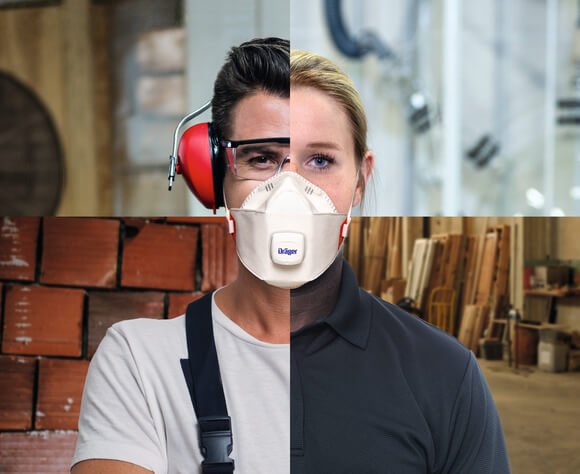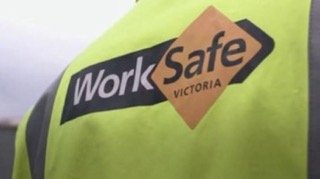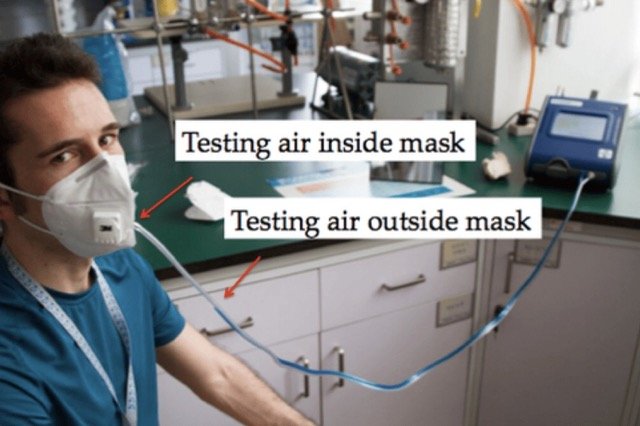N95 Fit Test
“Your process from booking to testing is super convenient, not only for the TAFE but our students also.”
“Having your team come to our farm made it so much easier to ensure all staff were tested and safe”
“Kris was professional and really clear. If it wasn’t for him I wouldn’t be able to go on my clinical placement. Cheers!”
“It has been a pleasure working with you and your team! We will be in touch when we require further mask fit testing.”
Fit Testing FAQs
When is a respirator fit test needed?
A Fit Test is required before a worker / employee undertakes a tasks that requires the use of a tight-fitting respirator, a tight-fitting respirator can be any of the following
disposable P2/N95
half-face reusable
full-face reusable
tight-fitting Powered Air Purifying Respirators (PAPR).
Every piece of Respiratory Protective Equipment (RPE) must be appropriately fitted and sized for the individual wearer. When control of exposure to occupational hazards requires the us of respiratory protection, managements needs to ensure a RPP is implemented as part of a risk control strategy. This includes conducting fit testing for staff who are required to use RPE
Why is fit testing required ?
Conducting a fit test is crucial for several reasons:
Ensure Proper Fit: Every face is unique, and respirators are not one-size-fits-all. A fit test helps ensure that the respirator fits securely on the wearer's face, reducing the risk of harmful exposure.
Protection Against Respiratory Hazards: A proper fit ensures that the respirator provides the desired protection against airborne particles and hazardous materials in the work environment.
Compliance with Regulations: Many health and safety regulators, like WorkSafe Victoria, require fit testing to be part of a Respiratory Protection Program (RPP). Failure to conduct fit tests can result in fines and penalties.
Employee Comfort and Confidence: A properly fitting respirator is more comfortable for the wearer. It also boosts employee confidence in their safety equipment, leading to increased usage and compliance.
Risk Control Strategy: Fit testing is an essential part of any risk control strategy, ensuring that workers are properly protected when exposure to respiratory hazards can't be entirely eliminated.
In essence, fit testing is a critical step in ensuring worker safety, regulatory compliance, and effective risk management in environments with respiratory hazard.
Is respirator fit testing required ?
In short yes, if staff are required to wear a “tight fitting respirator” then fit testing of that respirator is required and is a critical part of occupational safety. Regulatory bodies such as WorkSafe Victoria mandate that before an employee first uses a tight-fitting respirator, they must undergo a fit test. This test is essential to verify the effective seal between the respirator and the wearer's face, ensuring optimal protection against airborne contaminants in the work environment
What is Fit Testing ?
Respirator fit testing, often referred to as facial or mask fit testing, is a procedure conducted to confirm whether an effective seal is formed on the wearer by their selected Respiratory Protective Device (RPD).
The essence of a secure seal on tight-fitting respirators cannot be overstated. Without it, the wearer remains vulnerable to their surrounding environment, potentially leading to harmful health implications in certain situations.
How Is a Respirator Fit Test Conducted?
Two primary methods are employed for respirator fit testing: the Qualitative Fit Test (QLFT) and the Quantitative Fit Test (QNFT).
The QLFT involves using a challenge agent within a controlled hood. The wearer's ability to taste or smell the test agent is assessed, determining whether an effective seal is formed on disposable and half-face reusable respirators. This method offers a pass/fail result based on the wearer's sensory response.
On the other hand, the QNFT employs a machine for conducting the fit test. This machine can either be a Controlled Negative Pressure (CNP) machine, which uses air pressure to ascertain if a proper seal is achieved on half-face and full-face reusable respirators, or a Condensation Nuclei Counter (CNC), which compares particle counts inside and outside the mask to verify the seal on all P1, P2 disposable, half face, and full-face respirators.
At N95 Fit Test, our preferred method is the QNFT, utilising the state-of-the-art model 8048 Portacount (CNC) Machine we are able to fit test all tight fighting respiratory protection devices
Can You Conduct Fit Testing Onsite at Our Location ?
Absolutely! For groups comprising 5 or more individuals, we're more than happy to dispatch one or more of our proficient mobile fit testers to your location. Our services have been provided at various locations in the past, including construction sites, break rooms, first aid rooms, hospitals, educational institutions, boardrooms and aged care homes.
All we need from you is a table, chairs, and a power source. We bring with us everything else essential for the fit testing process, including the testing machine, consumables, and adapters. If notified beforehand, we can also bring along an array of respirators to meet your specific requirements



























